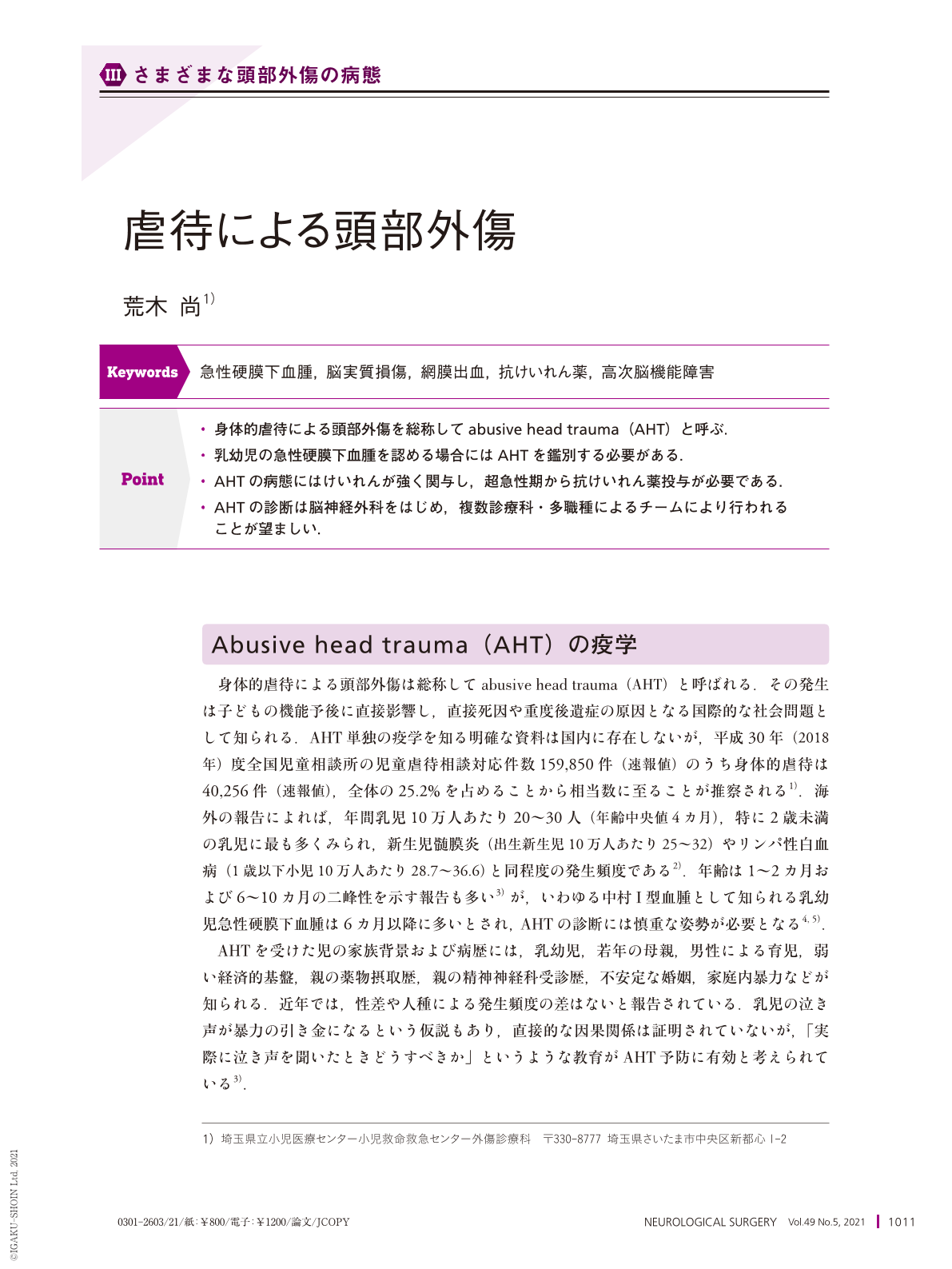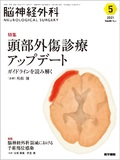Japanese
English
- 有料閲覧
- Abstract 文献概要
- 1ページ目 Look Inside
- 参考文献 Reference
Point
・身体的虐待による頭部外傷を総称してabusive head trauma(AHT)と呼ぶ.
・乳幼児の急性硬膜下血腫を認める場合にはAHTを鑑別する必要がある.
・AHTの病態にはけいれんが強く関与し,超急性期から抗けいれん薬投与が必要である.
・AHTの診断は脳神経外科をはじめ,複数診療科・多職種によるチームにより行われることが望ましい.
Abusive head trauma(AHT) is a leading cause of severe traumatic brain injury in children under 2 years old. Patients with AHT present with various clinical features, including acute subdural hematoma, retinal hemorrhage, and extensive hemispheric hypodensity, which has recently been reproduced in a basic experimental model. Despite multidisciplinary treatment, the outcome is poor, and neurological sequelae often remain. However, functional recovery seems possible with aggressive rehabilitation. The medical rationale for the diagnosis of AHT has a significant impact on the judicial decision-making process to determine evidence of child abuse, enabling collaboration with the police, prosecutors, and other investigative agencies, including lawyers. In Japan, infantile acute subdural hematoma(hematoma type Ⅰ)is a clinical form of hematoma that often occurs after 6-10 months, when the child is able to walk. It is accompanied by backward fall, sudden loss of consciousness, pallor, spastic paralysis of the extremities, and retinal hemorrhage. A nationwide survey of infant acute subdural hematoma due to minor injury is currently being planned, and it is hoped that this would be comprehensive in Japan. Medical personnel involved in neurosurgical emergencies have an important responsibility as a safety network for pediatric care and are expected to play a central role in the diagnosis of AHT through collaboration with many specialized departments.

Copyright © 2021, Igaku-Shoin Ltd. All rights reserved.


